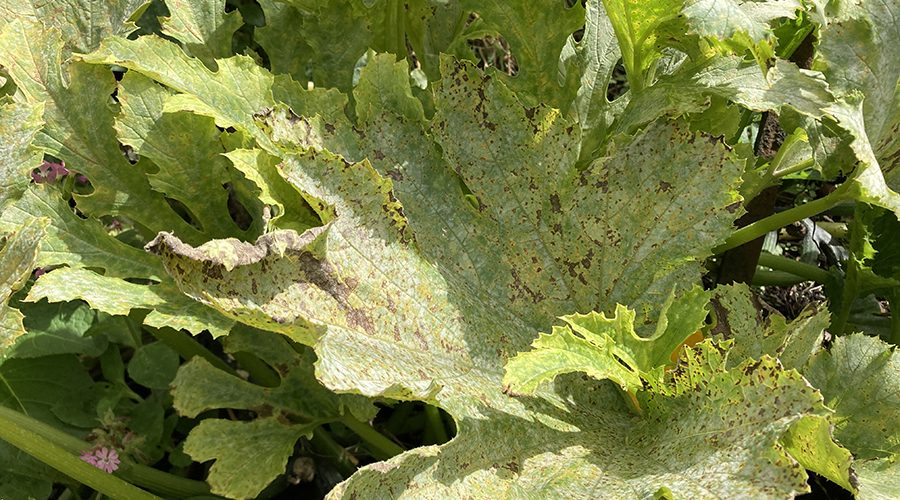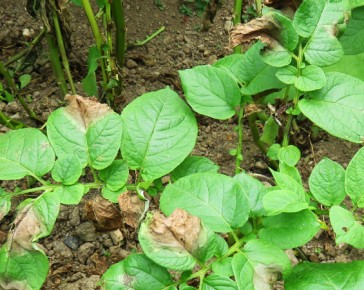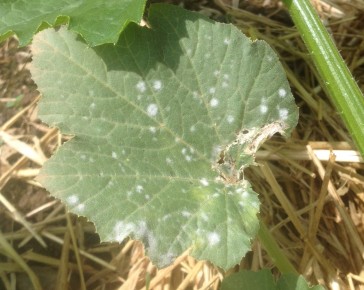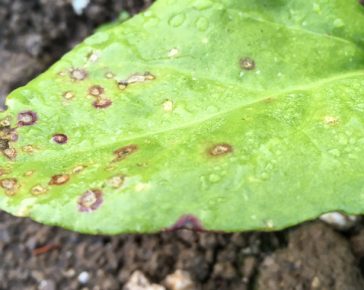If you’re seeing powdery mildew on courgettes and squashes, or burnt looking edges and yellowing leaves on beans, or spots on spinach, don’t worry too much – you’re not doing anything wrong and this is normal for this time of year. Here’s the lowdown on a few things you may be seeing in the vegetable garden:
Powdery Mildew – Peas, Squash, Courgette & Some Kale
This white coating on the leaves is very normal as the plants move into autumn. It is frustrating when it hits kale, and those should be pulled up if it is badly affecting them, but you can leave peas, squash and courgettes to their own devices and continue to harvest the fruits until they stop producing (leave winter squash/pumpkin fruits on the plants until they’ve fully matured towards the end of October)
Burnt Edges & Yellow Leaves – Beans, Squash
As plants reach the end of their lifecycle they will naturally start to die back. Yellowing leaves on mature plants at this stage is quite normal and less likely to be an indication of nutrient deficiency. If you are growing beans to store – like Borlotti, Canellini or Yin Yang – then leave the pods on the plants so that they can dry out.
Leaf Spot – Spinach, Chard, Beetroot
A few affected leaves is not the end of the world, and you can just pinch them out. If the plants start to become badly affected, then it’s sensible to thin them out further by harvesting generously – this will allow more air to circulate between the plants, and hopefully new growth will come through looking nice and healthy.
Bright Yellow Leaves – Sprouts, Cabbages, Kale, Broccoli, Cauliflower
Brassicas naturally drop their older leaves, and when they do the leaves turn a bright yellow and fall off the plant. For Cavolo Nero Kale, and Sprouts and Broccoli, this will be the lower leaves on the stalk. For cabbages and cauliflowers it will be the outer leaves. It is nothing to worry about, and just keep removing the leaves and adding them to the compost pile. If younger leaves are turning yellow at the edges, or mottled yellow, that is more likely to be nutrient deficiency and a liquid feed would help.
Blight – Tomatoes
This is quite common now, and may have affected tomatoes in the past couple of weeks. If you see brown splodges on the leaves or stems, prune off as much foliage as you can and just leave the fruits on the plants. This should be enough to stop the spread, but if the tomatoes themselves start to turn, then you can expect the rest of the crop to be affected too – in this instance, harvest what you can and try ripening them on a sunny windowsill.




